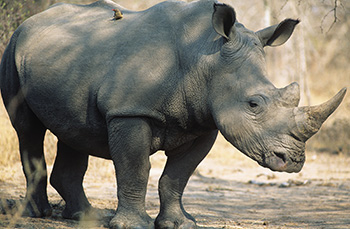
The black rhino is on the brink of extinction. The study that was
published in the Nature Scientific Reports reveals that the
species has lost an astonishing 69% of its genetic variation.
Photo: iStock
The conservation strategy of the black rhino in Africa needs to change in order to protect the species from extinction, a group of international researchers has found. The study that was published in the Nature Scientific Reports reveals that the species has lost an astonishing 69% of its genetic variation.
South African researchers took part
The researchers, which included local researchers from the National Zoological Gardens of South Africa (NZG), have highlighted the fact that this means the black rhino is on the brink of extinction. "We have found that there is a decline in genetic diversity, with 44 of 64 genetic lineages no longer existing," said Prof Antoinette Kotze, the Manager of Research and Scientific Services at the Zoo in Pretoria. She is also affiliate Professor in the Department of Genetics at the University of the Free State and has been involved in rhino research in South Africa since the early 2000s.
DNA from museums and the wild
The study compared DNA from specimens in museums around the world, which originated in the different regions of Africa, to the DNA of live wild animals. The DNA was extracted from the skin of museum specimen and from tissue and faecal samples from animals in the wild. The research used the mitochondrial genome.
"The rhino poaching ‘pandemic’
needs to be defeated, because
it puts further strain on the genetic
diversity of the black rhino.”
Ability to adapt
Dr Desire Dalton, one of the collaborators in the paper and a senior researcher at the NZG, said the loss of genetic diversity may compromise the rhinos’ ability to adapt to climate change. The study further underlined that two distinct populations now exists on either side of the Zambezi River. Dr Dalton said these definite populations need to be managed separately in order to conserve their genetic diversity. The study found that although the data suggests that the future is bleak for the black rhinoceros, the researchers did identify populations of priority for conservation, which might offer a better chance of preventing the species from total extinction. However, it stressed that the rhino poaching ‘pandemic’ needs to be defeated, because it puts further strain on the genetic diversity of the black rhino.
Extinct in many African countries
The research report further said that black rhino had been hunted and poached to extinction in many parts of Africa, such as Nigeria, Chad, Cameroon, Sudan, and Ethiopia. These rhino are now only found in five African countries. They are Tanzania, Zimbabwe, Kenya, Namibia, and South Africa, where the majority of the animals can be found.